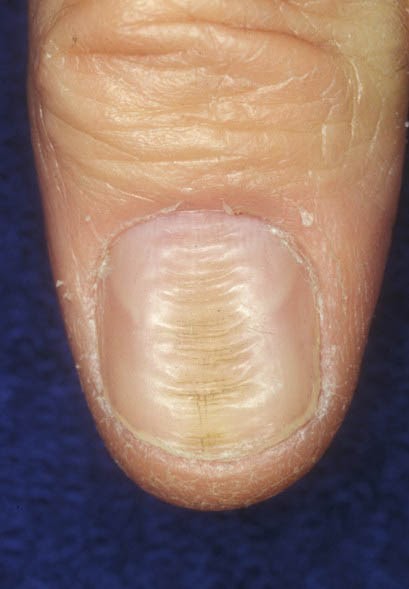Nailing It: Habit Tic...Why Not To Pick Your Nails.
Picking at your nails may seem harmless, but did you know that continuously 'scratching' at the nail's surface can in fact have a damaging impact on the natural nail plate?
Habit Tic is a common, yet unsightly nail disorder most frequently found on the thumbnails, which although self inflicted, can prove to create nothing but an unflattering inconvenience.
Often associated with those of a nervous disposition, a constant picking and scratching at the nail's surface, particularly at the base of the nail (proximal nail fold) where the softer, most recently formed portion of the nail is easily deformed, forces a band of horizontal ridges to visibly form down the centre of the nail.
A great tip to improve this unwanted condition is to remember that it is often the result of self inflicted damage. Although suffers' may appear to be 'picking' at a nail because it is rough, it is in fact only rough due to the constant picking action being performed as the result of a nervous habit.
If this valuable knowledge fails to break the habit, simply applying a plaster to the area targeted may prove to be particularly beneficial in successfully preventing, and breaking this troublesome problem. Alternatively, the application of a fibreglass cover (cap) may also be used for cosmetic purposes in order to smooth out the ridges while the new nail grows.
Remember, habit tic is just that...a habit! Once the habit has been broken and the cuticle has fully recovered, the new nail growth will be smooth and ridge free.
Habit Tic is a common, yet unsightly nail disorder most frequently found on the thumbnails, which although self inflicted, can prove to create nothing but an unflattering inconvenience.
Often associated with those of a nervous disposition, a constant picking and scratching at the nail's surface, particularly at the base of the nail (proximal nail fold) where the softer, most recently formed portion of the nail is easily deformed, forces a band of horizontal ridges to visibly form down the centre of the nail.
A great tip to improve this unwanted condition is to remember that it is often the result of self inflicted damage. Although suffers' may appear to be 'picking' at a nail because it is rough, it is in fact only rough due to the constant picking action being performed as the result of a nervous habit.
If this valuable knowledge fails to break the habit, simply applying a plaster to the area targeted may prove to be particularly beneficial in successfully preventing, and breaking this troublesome problem. Alternatively, the application of a fibreglass cover (cap) may also be used for cosmetic purposes in order to smooth out the ridges while the new nail grows.
Remember, habit tic is just that...a habit! Once the habit has been broken and the cuticle has fully recovered, the new nail growth will be smooth and ridge free.



Comments
Post a Comment